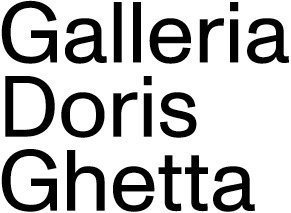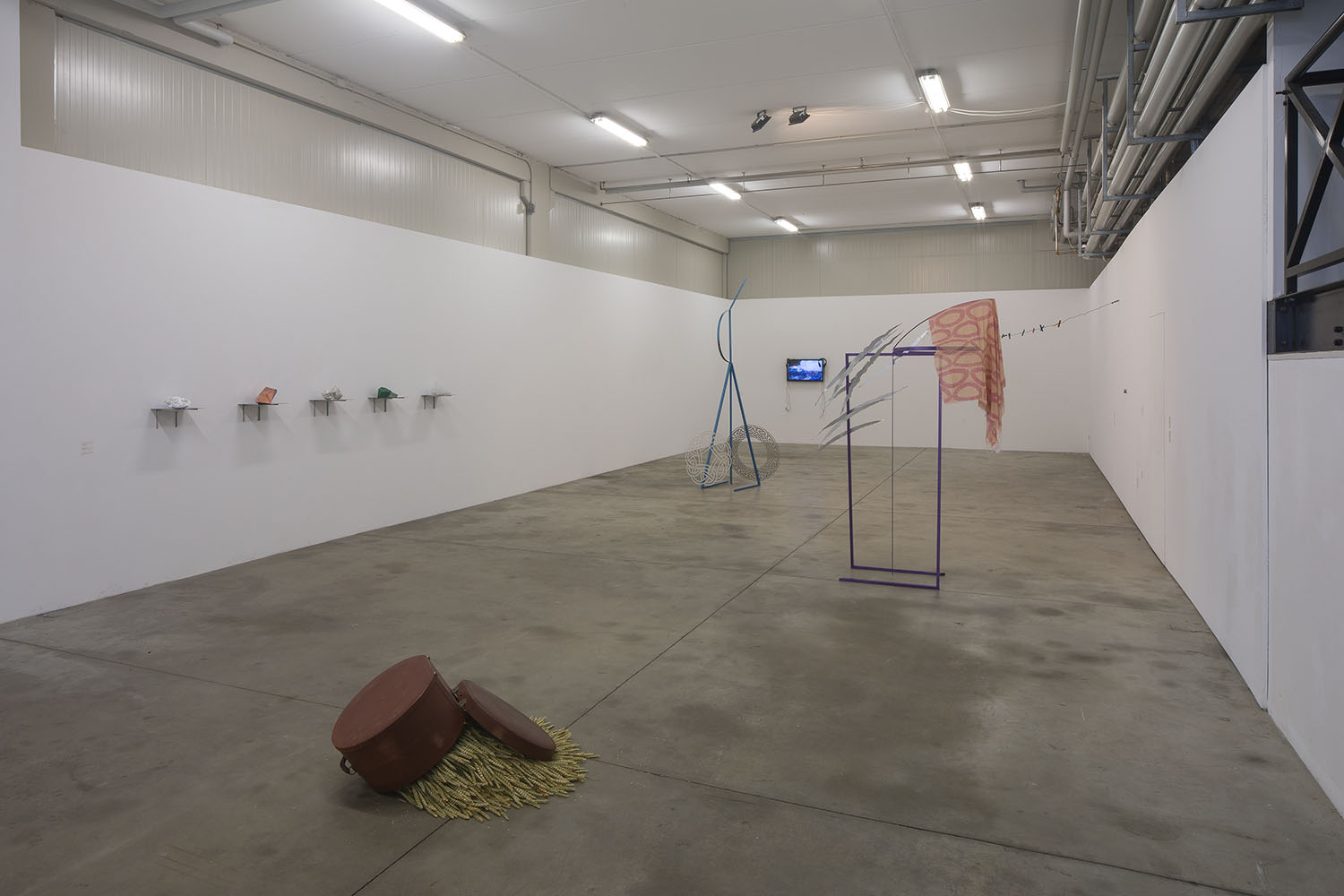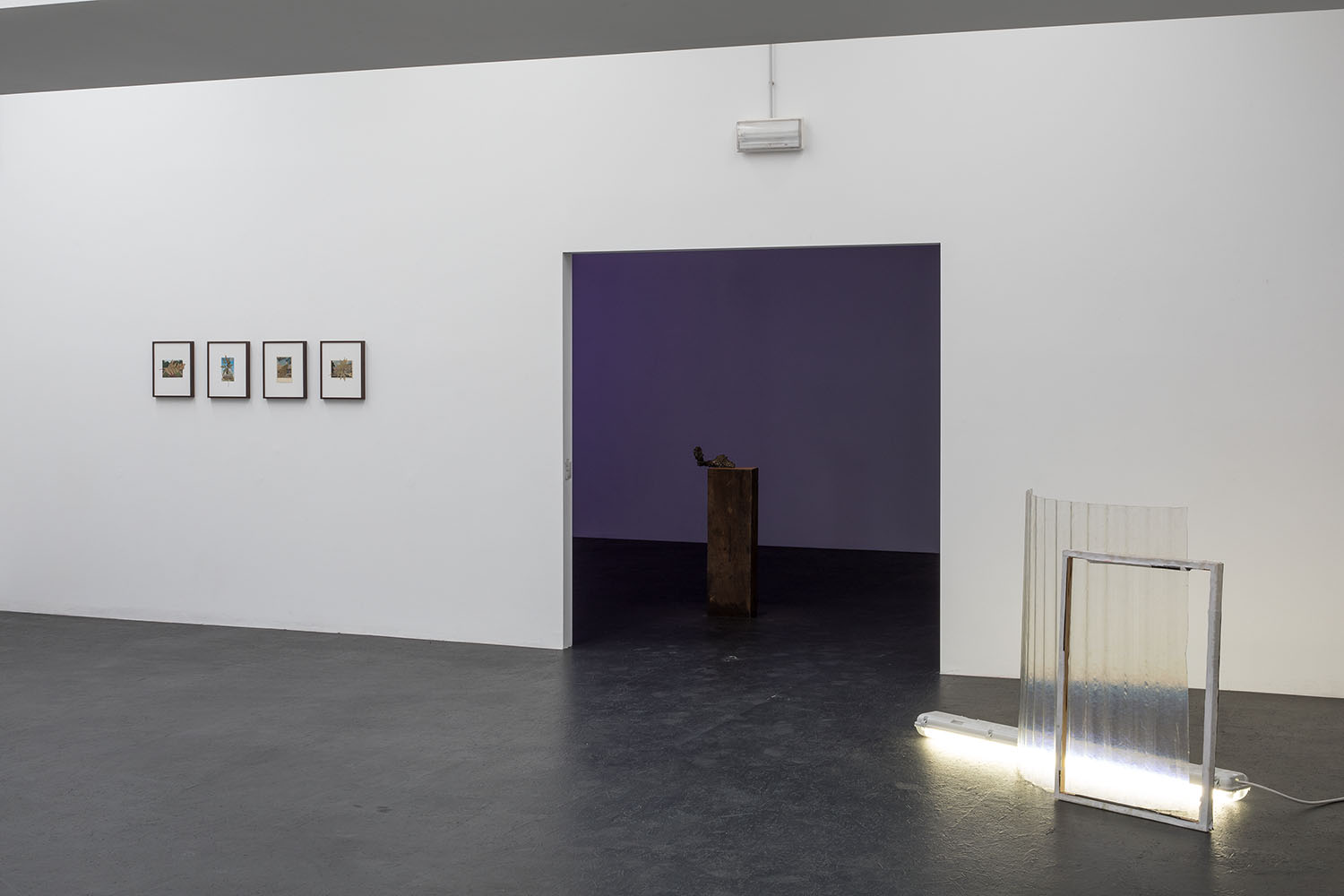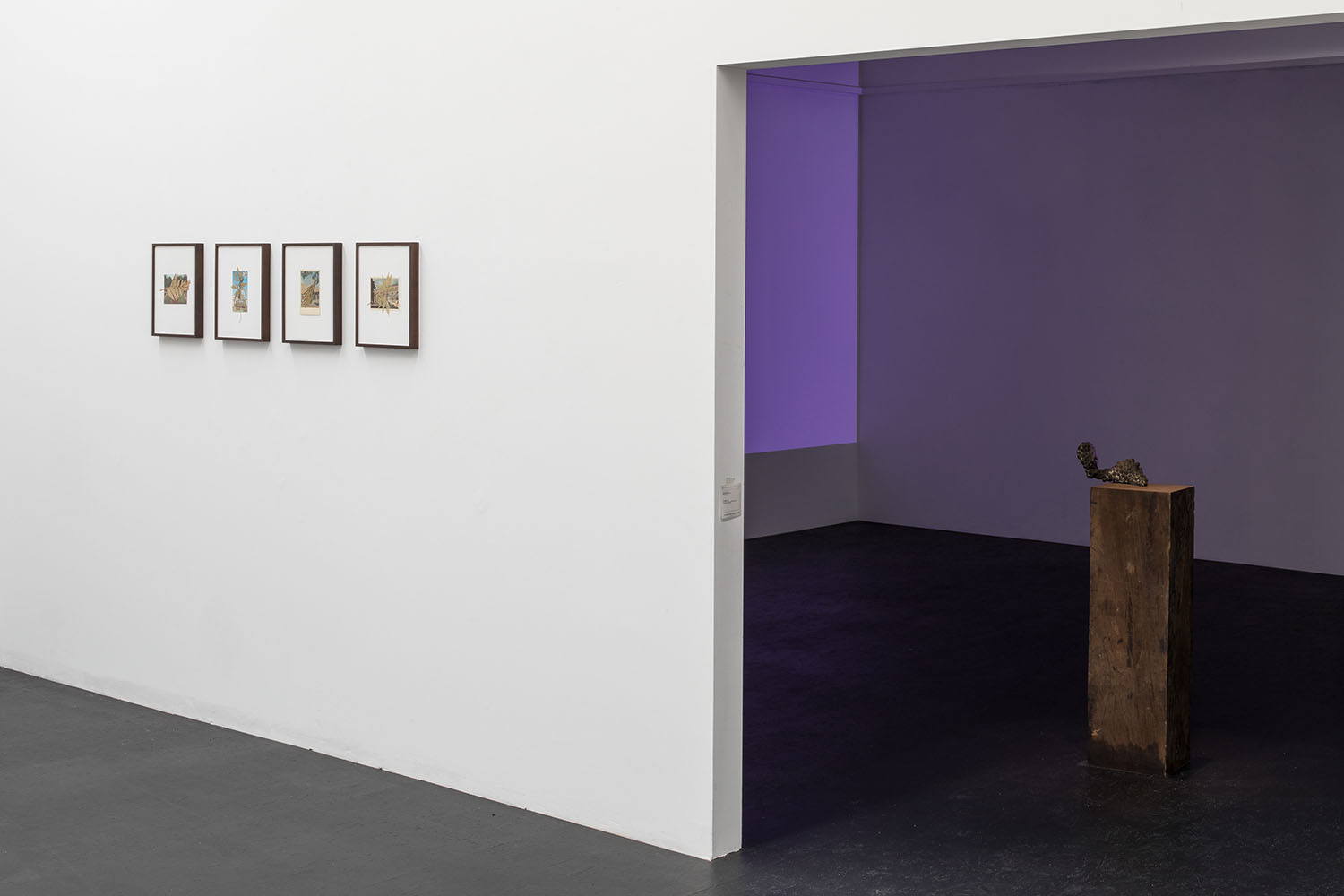SENSE AND SENSIBILIA
SENSE AND SENSIBILIA
curated by Luigi Fassi and Chiara Nuzzi
Artists: Sabrina Belouaar, Jeanne Berbinau Aubry, Gillian Brett, Gaetano Cunsolo, Eitan Efrat e Sirah Foighel Brutmann,
Haroon Gunn-Salie, Hilario Isola, Lito Kattou, Marzena Nowak,
Luca Resta
Vernissage: 01.06.2018 19h
02.06.2018 – 25.07.2018
Press release
comunicato stampa
Pressemitteilung
In Sense and Sensibilia, a book published posthumously in 1962 which now represents a decisive chapter in the history of thought in the second half of the 20th century, British philosopher J. L. Austin investigated the role of perception and the relationship between the data perceived by our senses and real objects. What do we really perceive? How can we verify the assumption of truth as predicated by our senses? What is the relationship between hallucinatory or imagined images generated by our mind and what we claim to be objective reality? Through philosophical analysis, Austin attempted to investigate these problems to distinguish what we think is reality from what is instead a subjective experience that claims to rise to the rank of truth. It is thus possible to sum up Austin’s reasoning on the philosophy of language as an attempt to discern between perception as an objective relationship with reality and perception as a merely subjective and culturally determined experience of the world.
It is not without irony (not least for the assonance between their surnames) that Austin chose to collect his reflections on the subject under the title, Sense and Sensibilia, which echoes that of Sense and Sensibility, Jane Austen’s celebrated novel of 1811. If the novelist adumbrated the possible contrast between sense seen as rational objectivity and sensibility as a more subjective, hence irrational dimension of human experience, in his formula the philosopher distinguishes between sense as a sensory perception and sensibilia as a more unpredictable dimension determined by the mutability of individual experience and its nuances in relation to the stimuli of the real.
What first Austen, then Austin draw our attention to is the complexity of the relationship between perception and the world around us produced by the kaleidoscopic system of subjective differences and nuances that influences this relationship, originating an ever changing multiplicity of interpretations and forms of perception, and eventually asserting as real and concrete experiences that are instead only subjective, partial and untrustworthy.
Sense and Sensibilia is thus a perception analysis model that serves as a tool for interpreting reality. Through a selection of works by ten artists belonging to a young international generation, this exhibition considers how, through the variability of the sensory point of view, the perception of history, social relations and political consciousness may be changed and recast, thus giving rise to new visions.
The artists display the changes that perception, as a many-sided channel of awareness of the world, may determine at personal and community level. Memories, biographical details, individual traumas, global changes – all are filtered by ambiguity between what is and what seems and by the impossibility of containing whatever reality imposes in a single cognitively conclusive interpretation. This is why both sense, the faculty of sensory reason, and sensibilia, the elements of interpretable variability offered by reality, are decisive in shaping the outcome of our experience of the world.
Luigi Fassi
Chiara Nuzzi
Many thanks to:
Eleni Koroneou Gallery, Athens
Galerija Gregor Podnar, Kranj - Berlin
Goodmann Gallery, Johannesburrg – Cape Town
Artists:
The theme of identity as the relationship between diverse and contrasting cultural roots is at he centre of the work of Sabrina Belouaar (Paris, France, 1986), an artist of Franco-Algerian origin whose preferred means of analysis is the body and its multiplicity of ambiguous representations. Through a metaphorical image, untitled (2015), she evokes the ambivalent role of femininity. The purity of a flower associated with royalty and majesty is counterpoised to a more profane element in the form of a goatskin. The artist has childhood memories of goatskin being used in Algeria as a receptacle for fresh water, but skin also evokes the practice of branding concubines and slaves as private property. By juxtaposing the lily and the goatskin, Belouaar creates a perceptive tension between the two elements, between the smell of a dead animal and the scent of a flower, their factual reality and their symbolic use. What persists in the contrast between the two elements is a condemnation of masculine culture’s manipulation of femininity and its appropriation as an object to be possessed.
Likewise, Illusion (2016) translates a difficult political and social issue into an image that is once complex and minimal. The work shows a leather suitcase saved by the artists’ mother, who works as a femme de ménage in the exclusive neighbourhoods of Paris. An object of well-being and leisure, the suitcase is presented by Belouaar as a ready-made, turned upside down on the floor to pour out a jumble of ears of corn. Here she is alluding to the presence of migrating men and women, bodies and thoughts captured in a moment of transformation and movement. The ears of ripe corn scatter their grains over the floor around the suitcase in a form of dispersion that appears as a loss, of an act of misplacement now over. If the ear of corn has always been a symbol of rebirth and an emblem of reawakening nature, for the artist the scattered grains have the flavour of the disillusion of people who have emigrated to France from elsewhere but have found their expectations for a better life unfulfilled there.
Jeanne Berbinau Aubry (Nice, France, 1989) explores nature and its transformations, seeking a point of mediation between natural and artificial phenomena. Every one of her works sets off a mechanism of transformation by creating an unresolved tension between configurations of diverse materials that originate from a subtle biographical reflection on her own experiences. In Liqueurs (2014), she presents spirits distilled from plants picked in the gardens of Villa Arson, the Nice museum and fines art academy, in crystal glass bottles. Frozen at the maceration phase, leaves, flowers, bark and stones distil their scents slowly in 90° alcohol which, like formalin, preserves their essence. In a repetition of the project during a residency in Rome in 2017 Berbinau Aubry offered a new sensory version of the gardens of Villa Medici, whose alcoholic reminiscences emanate from containers as an altered memory. Some of the crystal glass bottles in fact release the lead they contain into the alcohol and gradually turn memory into a veritable poison.
The sculptures of Gillian Brett (Paris, France, 1990) are often unusual, absurd and poetic representations of technological and mechanical devices extrapolated from their context. This operation gives them an enigmatic appearance, blurring the boundaries between two categories, entertainment and utility. The unusual rocks that compose Witnesses (2016) are a reference to another work,Untitled, produced with a set of LCD screens. If the screens in untitled show images and keep their production and functioning invisible, Witnesses reverses the process and shows what is hidden, revealing the elements inside the screens (printed circuits, polarising films, liquid crystals etc.) and their raw origins (precious metals and chemical industry production line). The work is thus both a tangible proof and a demonstration of the reality hidden behind one of the technology industry’s most recent products. With her intervention, which allows us to see other similar devices devoid of their functions, the artist is asking us to question the overwhelming role that machines have assumed in contemporary society.
Gaetano Cunsolo (Bronte, Italy, 1986) focuses on the themes of architecture, public space and relational and productive systems. In his works, produced with different media – from drawing to sculpture and video – he seeks to overturn our relationship with spaces by constantly redesigning objects’ environments, relations and politics. Central for the artist is the theme of industrial architectures in ruins, to which he has dedicated a number of sets of sculptures such as…Ruins…(2015 – ongoing), interpreted both as the matter of a potential space that is still being formed. By establishing an ever closer relationship with accumulation and industrial waste, Cunsolo is also directing his interest towards structures that suggest a reduction in vital spaces, like refuges and control positions. Quarter and Toit#3 (2018), a site-specific installations made largely of waste materials, refer to the practice of self-construction, formally re-elaborating spaces of cultural improvisation that resist urban planning and mass industrialisation by following the human need to create architectures that respond to necessities and logics other than those of the powers that be.
In Orientation (2015), their examination of two places – the public sculpture, White Square, in Tel Aviv and the sanctuary of the Palestinian village of Salameh, the modern-day Kfar Shalem, also in Israel – Eitan Efrat and Sirah Foighel Brutmann (Tel Aviv, Israel, 1983) reflect on the capacity of architecture, sound and image to record the loss of collective memory. In 1989, the Israeli sculptor Dani Karavan completed his sculpture White Square, dedicated to the founders of Tel Aviv, among whom his father Abraham Karavan, the city’s landscape architect from 1930 to 1970. The remains of the sanctuary of Salameh in the present-day Tel Aviv suburb of Kfar Shalem are situated a few hundred metres south of the hill on which the sculpture is to be found. The abandoned structure of the sanctuary was once the centre of an old Palestinian village occupied and cleared of its population by the Israeli army in 1948. Ownership of the territory is still disputed today and now Israeli Jewish residents risk being evacuated to allow for a plan to build luxury apartments there.
The film History after Apartheid (2015), directed by Haroon Gunn-Salie (Cape Town, South Africa, 1989), was inspired by the South African police’s practice of branding anti-apartheid demonstrators in street protests by spraying them with coloured liquid and then arresting them. The technique of shooting coloured water from canons to mark demonstrators was first used by the Nazi regime in Germany in the 1930s, and in later years became an iconic image of the struggle for emancipation from apartheid in South Africa.Gunn-Salie’s film builds a parallel between different social and political contexts by showing the use of the technique in Uganda, Bangladesh, Hungary, Turkey, South Korea and other countries with violent jets of ever different colours. The work is thus a visual kaleidoscope of fragments of global struggles for liberation and democratic emancipation today, in which the perception of colour distances itself from any ludic, creative significance to assume a dramatic, aggressive dimension.
A room in semidarkness, a sculptural form anchored to a rough wooden plinth and a shadow projected over a luminous surface – Mani (Manes) by Hilario Isola (Turin, Italy, 1976) is a work of light and shade, of substance and space, an evocation of rites and mysteries that seem to belong to an ancient pre-Christian Roman religion. The Manes were in fact the souls of the deceased and chthonic deities, an object of devotion and of both family and public votive offerings to gain protection for houses and life in the fields. The spectator is asked to interact with the work and become part of it. As their hands grasp the small bronze sculpture of a bunch of grapes, perception of its shadow on the wall, which now resembles a human profile – maybe that of an ancient Bacchic deity – is complete. But the shadow and the expression of the profile change according to the shape of the hand of the person touching the sculpture, so the face is always different. What appears disappears, what can be seen is transient and evanescent. In Mani, physical substance and symbolic substance appear to interpenetrate to restore a more real dimension of contact with the physical and spiritual substance of nature.
Sculpture is the fulcrum of the artistic production of Lito Kattou (Nicosia, Cyprus, 1990). Her works are often reminiscent of relicts that act as potential weapons, suits of armour or even as warriors, which is the case of the two works in the exhibition, Warrior I and Warrior V (2017). These continue the artist’s reflection on the potentialities of volume and the different processes of personification and transfiguration of time and space through the use of matter. The silhouettes of the two metal warriors carry and, at once, incorporate weapons, jewels and hides made with materials such as aluminium, minerals, iron, plastic and fabric. Through experimental techniques that range from digital production to thermochemical processing, the works explore materiality and subjectivity with a multiplicity of gestures that negotiate their meaning. Here space, form and narration are structured around the traces left by actions of attack and defence, conceived by Kattou as ways of experiencing and suggesting communication.
The works of Marzena Nowak (Piaseczno, Poland, 1977) spring from the spaces of memory and reside in the tension that exists between the ephemeral dimension of the present and material traces of the past. Nowak evokes past events and transfigures them into moments of meditation and emotive reflection, causing perception to deviate between the images of her sculptures and the original intuition of the image that has generated them.In her untitled series, she reproduces simple intimate objects of daily life like books, flowers, rosaries and parts of the body, in the form of sculptures. In untitled (Clips) 2011, she reproduces a washing line with coloured pegs in a minimal poetic resurfacing of a visual image of childhood. In untitled (Space between big and second foot toe) 2009, she has produced a metal cast of the space between the big toe and the second toe of her own foot, a negative autobiographical form that retraces the space of the body as a fragile sign of identity and memory.In her video untitled (Mizianie) 2010, two hands in the foreground move over a neutral surface, always repeating the same gestures. As in choreography, the work seeks a possible harmony of movement in an allusion to the art of embroidery, a traditional occupation of the artist’s family.
untitled (Kazahkstan) 2012 is made up of vintage postcards of the urban and rural landscape of Kazakhstan. Here Nowak has created a collage of images of celebrations marking the country’s independence from the Soviet Union in 1991, superimposing leaves from trees of different shapes and sizes.
Élevage De Cadres (2013) by Luca Resta (Bergamo, Italy, 1982), consists of a series of framed grey pictures piled up and left against the wall as if they were ready to be stored in an archive or mounted in an exhibition. The outcome of a work in progress developed by the artist by collecting empty frames from various periods, Élevage De Cadres was composed by slowly stratifying gunpowder on paper to make every framed element look like a flat, evenly coloured background. But in his conversation with the tradition of monochrome in the history of modern art and its formal icy severity, Luca Resta alters the spectator’s perception and expectations by presenting a work of alarming, unpredictable potential with the appearance of an unidentified collection of unknown paintings.






